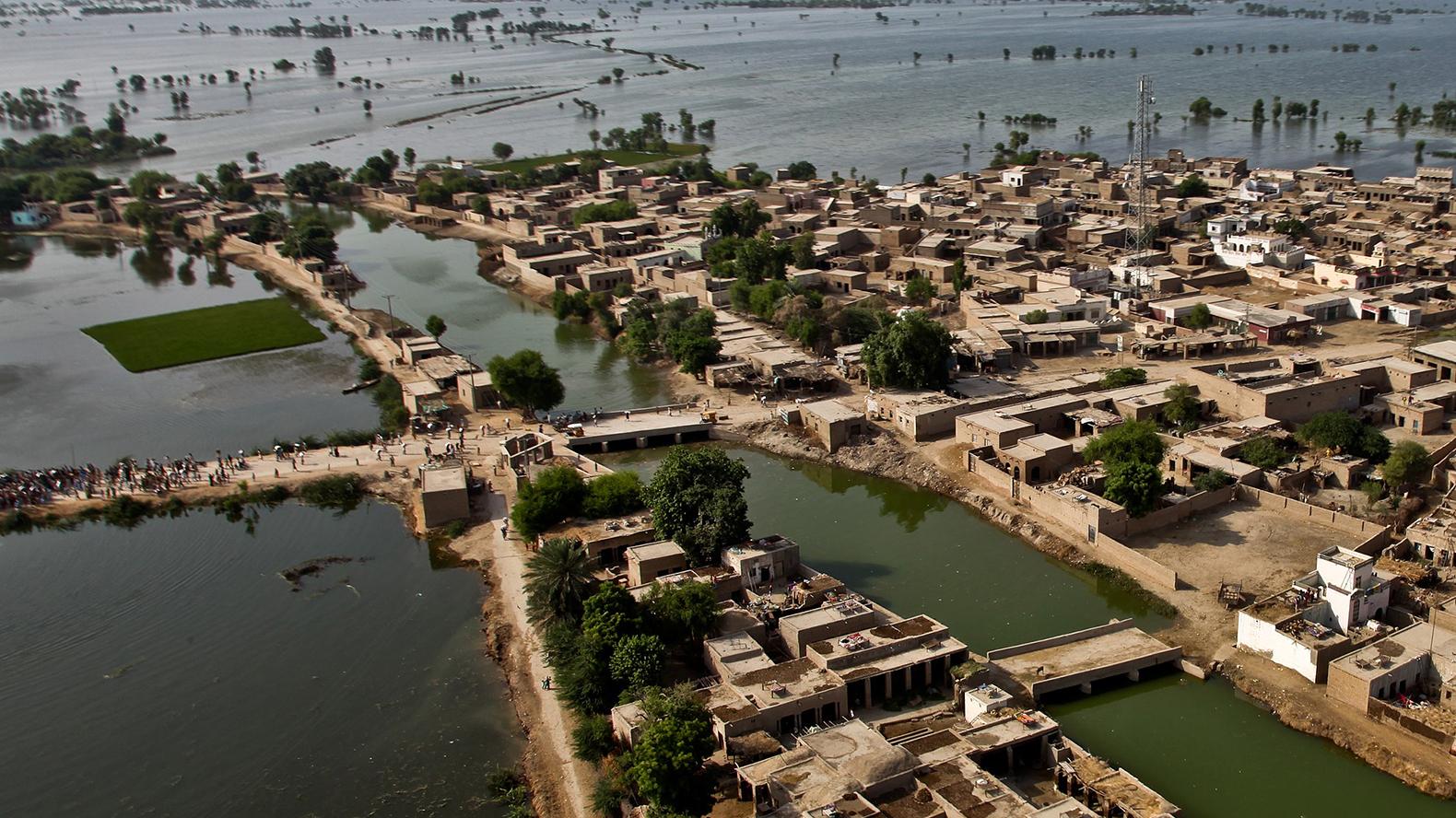
Cover photo: Flooding in Pano Aqil, Pakistan, 2022.
Words by Linda Nowlan
Climate Action Network International’s Harjeet Singh says “Loss and damages” or more international financing to pay for losses due to climate catastrophes will be a make-or-break issue for COP27. Egypt, COP’s host country this year, is working to put this item on the official agenda, as last year’s COP in Glasgow failed to make much progress on this issue.
Pressure on the countries who caused the majority of carbon pollution to pay up on loss and damages is growing:
• The Alliance of Small Island States is calling for a Loss and Damage Response Fund.
• The Climate Vulnerable Forum, a group of countries highly vulnerable to a warming planet, recently launched Payment Overdue, an online social media campaign “to confront the global injustice of the growing fallout of the planetary climate emergency that affects the world’s vulnerable and least responsible populations most of all.”
• Oxfam says “Scaled-up financial support from governments, corporations and individuals most responsible for causing the climate crisis, and most able to pay, is an immediate necessity. A new finance facility must be created to help ensure that finance to address loss and damage is accessible and sustained, is additional to adaptation, mitigation and ODA commitments, and is delivered in accordance with the principles of climate justice.”
• Over 400 organizations signed an open letter to put loss and damage financing on the official COP27 agenda.
Oxfam’s Footing the bill: fair finance for loss and damage in an era of escalating climate impacts report explains why loss and damage finance is a climate justice issue:
“In every climate-related disaster, in rich and poorer countries, it is the poorest people who are hit hardest, driving up inequality. Loss and damage is strongly concentrated in poorer populations. Wealth and income inequality intersect with race, gender and ethnicity to create even greater vulnerability to climate impacts. Richer people are less exposed to climate risks and better able to weather disasters. They live in more secure places and have more assets to draw on. Poorer people have less protection and therefore experience greater loss and damage, which accumulates over time. As a result, the gap between those at the bottom and those at the top grows ever wider.”
Resources
Carbon Brief's interactive explainer lays out what loss and damage is, who is responsible and how it should be paid for.